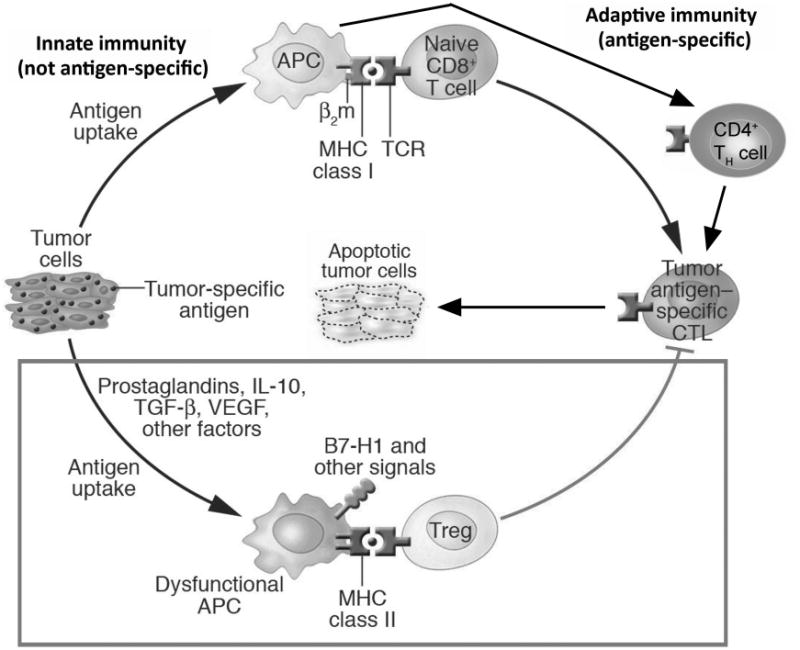Figure 2.

Critical elements of tumor-associated immune dysfunction. Although anti-tumor immunity is elicited according to the scheme outlined in figure 1, and shown in the top half of this figure, active tumor-driven immune dysfunction (boxed portion in bottom half of the figure) thwarts immune cancer elimination. Antigen presenting cells, which in the top half can activate tumor-specific immunity, can also elicit dysfunctional immune cells that turn anti-tumor immunity off, or inhibit it through subversion by tumor factors. Factors responsible for this dysfunction can derive from the tumor itself, or from local stroma or immune cells. These agents include immune suppressive vascular endothelial growth factor (VEGF), transforming growth factor (TGF)-β and interleukin (IL)-10. These molecules can directly inhibit immunity, such as the ability of TGF-β, IL-10 or VEGF to inhibit T cell activation, or can indirectly elicit other dysfunctional cells. In this latter instance, tumor IL-10 or VEGF can promote antigen presenting cells to express B7-H1, an immune molecule that can directly inhibit T cells, or promote generation of regulatory T cells (Tregs) that inhibit anti-tumor immunity. Novel strategies to overcome these complex and potent tumor-driven active defenses against anti-tumor immunity represent major new opportunities to improve the efficacy of anti-tumor immunotherapy. Figure adapted from (Curiel, 2007).
